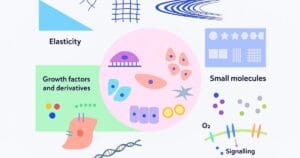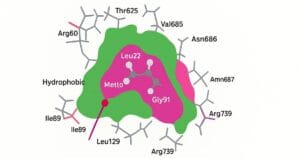
COMPETITIVE EXAM MCQs SERIES of ENVIRONMENTAL SCIENCE for UGC-NET/JRF, SLET, ARS, GATE, and other entrance tests – Energy and Environment – Hydropower and Thermal Energy.
Syllabus Outline
- Principles of hydropower generation.
- Types of hydropower plants (e.g. reservoir, run-of-river and pumped storage)
- Environmental impacts and sustainability considerations.
- Global and regional trends in hydropower utilization.
- Technological advancements in hydropower generation.
- Basics of tidal energy generation and types of tidal energy converters (e.g. tidal stream generators and tidal barrages)
- Potential for tidal energy in different geographical locations.
- Fundamentals of thermal energy generation and types of thermal power plants (e.g. coal, gas, oil, and nuclear).
- Environmental implications of thermal energy production.
- Efficiency improvements and emissions reduction techniques.
This quiz contains the concept-based most frequently asked 25 MCQs of “Energy and Environment – Hydropower and Thermal Energy“. Each question has a single correct/most appropriate answer.
*****
1. Which ocean thermal energy conversion system utilizes ammonia as the working fluid?
a) Hybrid-cycle
b) Binary-cycle
c) Closed-cycle
d) Open-cycle
2. What is the average temperature required for ocean thermal energy conversion systems to work effectively?
a) 20-25°C
b) 30-35°C
c) 10-15°C
d) 40-45°C
3. What is the primary disadvantage of small-scale hydropower systems?
a) High initial cost
b) Low-efficiency
c) Limited environmental impact
d) Dependency on weather conditions
4. Which technology allows hydropower plants to store energy for later use?
a) Capacitor storage
b) Flywheel storage
c) Battery storage
d) Pumped-storage
5. What is the primary advantage of tidal power generation compared to other forms of hydropower?
a) Minimal environmental impact
b) Ability to operate in remote locations
c) Predictability of tides
d) High energy density
6. Which material is commonly used in heat exchangers for ocean thermal energy conversion systems?
a) Copper
b) Stainless steel
c) Aluminum
d) Titanium
7. What is the term for the ratio of the actual energy output of a hydropower plant to its maximum potential output?
a) Efficiency ratio
b) Capacity factor
c) Utilization ratio
d) Load factor
8. Ocean thermal energy conversion systems primarily utilize the temperature difference between:
a) Warm and cold ocean currents
b) Polar and equatorial regions
c) Coastal and open ocean environments
d) Surface water and deep ocean water
9. What is the primary advantage of pumped-storage hydropower plants for grid stability?
a) Rapid response time
b) High energy density
c) Minimal environmental impact
d) Low construction cost
10. What is the primary function of a penstock in a hydropower plant?
a) Turbine control
b) Water storage
c) Water diversion
d) Electricity transmission
11. Which tidal energy technology involves underwater turbines to capture kinetic energy from tidal currents?
a) Tidal barrage
b) Tidal fence
c) Tidal lagoon
d) Tidal stream generator
12. Which factor limits the feasibility of tidal power generation in certain locations?
a) Ocean currents
b) Tidal amplitude
c) Atmospheric pressure
d) Water salinity
13. Which environmental benefit is associated with the operation of run-of-river hydropower plants?
a) Prevention of soil erosion
b) Preservation of aquatic habitats
c) Reduction in greenhouse gas emissions
d) Enhanced nutrient cycling
14. Which oceanic region is most suitable for ocean thermal energy conversion systems?
a) Southern Ocean
b) Atlantic Ocean
c) Pacific Ocean
d) Indian Ocean
15. Assertion (A): The main advantage of ocean thermal energy conversion (OTEC) systems is their ability to provide a constant renewable energy source. Reasoning (R): OTEC systems utilize the temperature difference between warm surface water and cold deep ocean water to generate electricity, which remains relatively constant throughout the day and year.
a) Both the A and R are true, but the R is not a correct explanation of the A.
b) Both the A and R are true, and the R is a correct explanation of the A.
c) The A is true, but the R is false.
d) The A is false, but the R is true.
16. Which component of a hydropower plant regulates the flow of water to the turbine?
a) Penstock
b) Reservoir
c) Spillway
d) Intake structure
17. Assertion (A): Tidal energy has the potential to provide a reliable and predictable source of renewable energy. Reasoning (R): Tidal energy generation depends on the moon’s and sun’s gravitational forces, which result in predictable tidal patterns that can be harnessed for energy production.
a) The A is false, but the R is true.
b) The A is true, but the R is false.
c) Both the A and R are true, but the R is not a correct explanation of the A.
d) Both the A and R are true, and the R is a correct explanation of the A.
18. What is the primary factor limiting ocean thermal energy conversion efficiency?
a) Corrosion of system components
b) Scaling in heat exchangers
c) Ocean temperature fluctuations
d) Energy loss during heat transfer
19. Which factor primarily determines the potential energy of water in a hydropower system?
a) Turbine efficiency
b) Altitude difference
c) Flow rate
d) Water temperature
20. What is the primary factor influencing the magnitude of tidal energy available at a particular location?
a) Latitude
b) Longitude
c) Barometric pressure
d) Altitude
21. Which environmental impact is associated with run-of-river hydropower plant construction?
a) Increased flood risk
b) Habitat destruction
c) Alteration of river flow patterns
d) Lowered sedimentation
22. Assertion (A): The deployment of tidal barrage systems can significantly change sedimentation patterns in estuarine ecosystems.
Reasoning (R): Tidal barrages impede the natural flow of sediment within estuaries, leading to an accumulation of sediment behind the barrage and reduced sediment transport downstream. This can result in changes to the morphology of the estuary, affecting habitats and ecosystems.
a) Both the A and R are true, but the R is not a correct explanation of the A.
b) Both the A and R are true, and the R is a correct explanation of the A.
c) The A is true, but the R is false.
d) The A is false, but the R is true.
23. What tidal energy system is typically deployed in areas with strong tidal currents?
a) Tidal lagoon
b) Tidal fence
c) Tidal barrage
d) Tidal stream generator
24. Which tidal energy technology operates similarly to a hydroelectric dam, utilizing the potential energy of water stored at high tide?
a) Tidal stream generator
b) Tidal barrage
c) Tidal lagoon
d) Tidal fence
25. Which environmental concern is associated with large dam construction for hydropower generation?
a) Decline water quality
b) Soil erosion
c) Displacement of communities
d) Decline groundwater recharge
*****
Previous: Shale Oil, Coal Bed Methane and Gas Hydrates
Next: Nuclear Fission and Fusion Energy
References
- Arora, S.C. (2014) Renewable Energy Sources and Emerging Technologies, PHI Learning Pvt. Ltd., 2nd Edition
- Bhattacharya, S.K. (2015) Power Plant Instrumentation and Control Handbook: A Guide to Thermal Power Plants, Springer, 1st Edition
- Elgerd, O.I., Kothari, D.P., and Kothari, M.L. (2017) Electric Energy Systems Theory: An Introduction, Tata McGraw-Hill Education, 1st Edition

